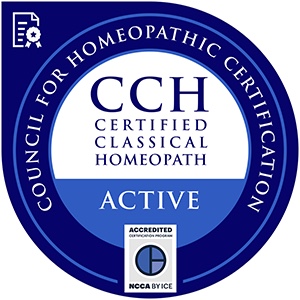Protocols and polypharmacy, advice to students
This post originally appeared on the student listserv at the Caduceus Institute of Classical Homeopathy. It has also been posted on the Caduceus website.
There was a question asked a few days ago on the subjects of Banerji protocols and one particular group of homeopathic mixtures.
There are essentially three questions being asked:
1. What do we think of homeopathic mixtures?
2. What do we think of the Banerji protocols?
3. How do we convince people that classical homeopathy is the best approach?
Selling people on homeopathy
I’d like to take question #3 first: When we first get started learning about and using homeopathy, we often feel like we need to share it with everyone we know. It’s a generous impulse and one I think we all have. But after a few years of speaking unsuccessfully to people about homeopathy, I realized that I was trying to push my viewpoint on people who weren’t interested. I didn’t even see it as a viewpoint, I was simply trying to help. But they definitely experienced what I was saying as a viewpoint they were not willing to share.
It is an irony of the homeopathic profession that we’re so good at helping people stay healthy and out of the hospital but that most of the people who come to see us have often tried EVERYTHING else before they would even consider seeing a homeopath. We often get them after all sorts of damaging treatments. Nevertheless, we get them! And, God willing, we’re still able to help them.
As practitioners of the medicine of observation, we need to be willing *observers* of reality and leave people be who are happy with their lives as they are. Which is to say that we cannot help people who do not want our help. We cannot change people’s minds except by changing the way we treat them. Our confidence in our profession will eventually win out. There is no need to debate people on the merits of homeopathy or classical homeopathy.
Which brings me to the first two questions, to which the answer is always the same: Let people do what they think is right, be confident that what you are doing is right. Maybe those other people will come around. Maybe they won’t. Doesn’t matter.
Polypharmacy in homeopathy
Question 1: On the subject of homeopathic mixtures, the data is clear. They are sometimes very helpful, sometimes not helpful at all, but in the long term people get better results from single remedies given one at a time according to the principle of like cures like. This is well documented at this point.
The mixes at the store are often quite helpful. If someone calls me because their child is having difficulty with teething, I’ll recommend that they try the teething tablets from the store first. Why? Because it will cost them 1/50th what it’s going to cost for a full intake. And! Because teething is most of the time a temporary disease, right? It stops, the child feels better, problem solved for now. And if the problem persists, then the child can come in for the full workup.
Another great trick I learned a while ago while treating an outbreak of whooping cough: If your remote patients can’t get the remedy Coccus cacti at the store (and they can’t), what they can get is Chestal Honey cough syrup, which contains Coccus cacti and is often soothing enough to use for a few days while we get them a better remedy.
Most of the time, what happens with homeopathic mixes is either they do nothing (often because the patient chooses the wrong mix), or they help a little bit off and on for a couple of weeks. My patients will often tell me that they tried a mix and it worked, then it just stopped working. But it piqued their interest in homeopathy.
Homeopathic protocols
Question 2: The Banerji protocols were developed by some of the most experienced homeopaths in the world. The Banerji clinic reputedly sees upwards of 500 patients a day and charges the equivalent of $5 per visit.
What the Banerji protocols are designed to do is give the most likely remedy for the condition being seen. Maybe 35% of patients respond to the first protocol. If it doesn’t work for a patient, they move to the next protocol for that condition, and maybe 25% of patients respond to that. Then they move to the third protocol, etc. The remedy is still individualized to the patient’s pathology, so it still takes a lot of knowledge of pathology and knowledge of homeopathy to pull this off, especially if you’re seeing 500 people a day.
The Banerjis also employ dozens of case takers and administrators who get those hundreds of bodies in one door and out the other all day long.
Why not do this ourselves? 1. None of us have this level of knowledge or experience. 2. Most of us are not licensed docs and so cannot set up medical clinics. 3. There are already a gazillion conventional docs practicing symptomatic medicine for cheap (because they can take insurance).
In my personal opinion, I think the Banerji protocols are perfectly fine in the context of the Banerji clinic. Those highly experienced clinicians can make very rapid choices between the protocols that apply to a particular pathology.
Where I have a huge problem with the Banerji protocols is when I see American practitioners who have spent a few weeks in a clinic in India now selling those protocols online and prescribing for people by email.
Remember, I said the Bannerji protocols are *still individualized to the patient*. If someone comes in with a diagnosis of heart failure, the Banerjis are not simply starting with Heart Failure Protocol #1, for example. They’re looking at the patient, taking the patient’s pulse, examining the patient for skin color, varicosities, swelling, perspiration, dyspnea and probably listening to the patient’s heart and lungs. Using that information, they can choose the best heart failure protocol and start with remedy #1 from that specific protocol. (I am using heart failure as a general example. I don’t know the various protocols.)
This is very different from charging people $25 an email to simply recommend [Insert Pathology Here] Protocol #1!
Bottom line, homeopathic protocols are terrific within the context of large medical clinics that charge a nominal fee and see lots of indigent patients. If we want to visit the Banerji clinic and train in those protocols and then get our MDs and open vast clinics where the poor only pay $15 a visit, I think that would be amazing! If the states where we practice actually let a medical doctor practice homeopathy that openly without losing their license, that would be a miracle.
People serious about homeopathy end up at classical homeopathy
I have seen many people who have tried this approach, and I have seen many people who have tried the polypharmacy approach. They came to me because they had not seen lasting improvement from non-classical approaches.
Remember, if it sounds too good to be true, it most likely is. One of my dear friends has been practicing homeopathy for going on 40 years. He is the most dedicated, hard-working homeopath I have ever met, even in his 70s willing to go back to the materia medica and learn something new, or even to entertain the possibility that another style of homeopathy might be worth looking into. In fact, he has looked into them all. In the end, he still practices classical homeopathy. He still schedules people for a two-hour intake, though he rarely needs that long to get a good case. And he still prescribes based on the totality of the symptoms of the disease.
There are not nearly enough homeopaths in the world. You will find your patients, and with any luck they will be people who are committed to being healthier and who have the patience to travel that longer road with you to better health.
###





